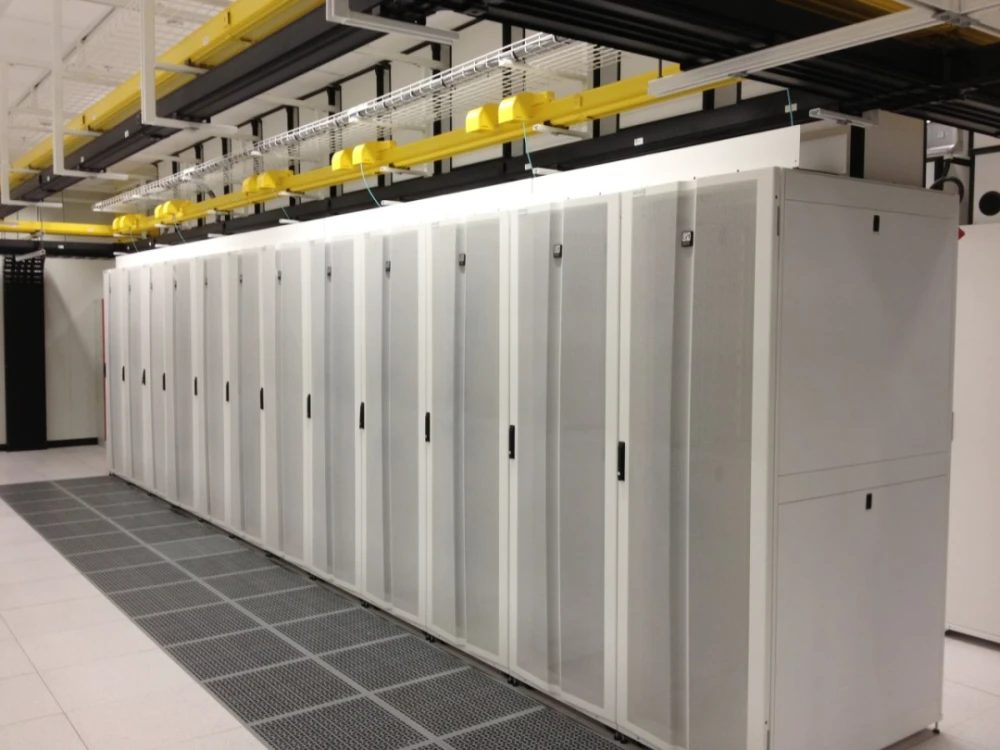In the ever-evolving digital landscape, data centers stand as the unsung heroes powering our interconnected world. But amidst the impressive arrays of servers, cutting-edge technologies, and vast networks, there’s a humble yet essential component that often goes unnoticed: the raised floor. Serving as the backbone of these technological powerhouses, data center raised floor standards play a critical role in ensuring efficiency, reliability, and scalability. Join us as we delve into the world beneath, exploring the importance of elevated standards and their remarkable impact on the performance and longevity of data centers. Get ready to uncover the hidden foundation that keeps our digital world standing tall.

1. ANSI/TIA-942: Setting the Foundation
The Telecommunications Industry Association (TIA) is a leading organization that publishes standards for information and communications technology (ICT) infrastructure, including data centers. Their ANSI/TIA-942 standard is a comprehensive guideline for data center design and includes recommendations for raised floor systems. Some key areas covered in this standard include:
- Load capacity: ANSI/TIA-942 specifies load ratings to ensure that raised floors can support the weight of equipment, racks, and other infrastructure. This helps prevent floor collapse and ensures safety within the facility.
- Static dissipation: Static electricity can cause damage to sensitive electronic equipment. The standard outlines requirements for static dissipation measures, such as the use of conductive flooring materials and grounding techniques, to minimize the risk of electrostatic discharge.
- Grounding: Proper grounding is crucial for maintaining electrical safety and mitigating the risk of electrical faults. ANSI/TIA-942 provides guidelines for the design and installation of grounding systems in raised floors, including the use of grounding bars and conductive pathways.
2. BICSI-002: Best Practices for Data Center Design
BICSI, a globally recognized association for ICT professionals, has published the BICSI Data Center Design and Implementation Best Practices Guide (BICSI-002). This guide offers valuable insights into various aspects of data center design, including raised floors. Here are some key considerations from BICSI-002:
- Design flexibility: Raised floors should allow for easy reconfiguration and scalability to accommodate evolving infrastructure needs. The guide emphasizes the importance of considering cable management pathways, power distribution, and cooling systems when planning the layout of a raised floor.
- Raised floor height: The guide recommends a minimum height for raised floors to provide adequate space for cabling, power conduits, and cooling airflow. This height should also consider future requirements and accessibility for maintenance and equipment installation.
- Environmental considerations: BICSI-002 stresses the need to consider environmental factors such as temperature, humidity, and static control when designing raised floors. These considerations help maintain optimal operating conditions for both the raised floor components and the data center equipment.
3. Uptime Institute: Tiered Performance Standards
The Uptime Institute is a globally recognized authority on data center design, management, and operations. Their Tier Standard documents define different levels of data center performance and provide guidance on achieving each tier. While not explicitly focused on raised floors, these standards indirectly impact raised floor design due to their influence on overall data center infrastructure. Some notable considerations include:
- Tier-level requirements: Uptime Institute’s Tier Standard documents outline performance requirements for data centers, including redundancy, fault tolerance, and availability. These requirements affect the design and configuration of raised floors, ensuring their ability to support critical systems without interruption.
- Airflow management: Efficient airflow is vital for maintaining optimal operating temperatures within the data center. Properly designed raised floors contribute to effective airflow management by providing dedicated pathways for cold air supply and warm air return, reducing the risk of hot spots and improving cooling efficiency.
4. National Fire Protection Association (NFPA): Ensuring Safety
The National Fire Protection Association (NFPA) establishes guidelines and standards for fire safety, including electrical systems. While not specific to raised floors, several NFPA codes impact their design and construction. Key considerations include:
- Electrical grounding: Proper grounding of raised floors is essential for electrical safety and minimizing the risk of electrical faults and fire hazards. NFPA codes, such as the National Electrical Code (NEC), provide requirements for grounding methods and components within data center raised floors.
- Wiring methods: NFPA codes define appropriate wiring methods, such as conduit installations, within raised floors to protect cables from damage, reduce the risk of fire, and facilitate maintenance and future upgrades.
5. European Committee for Standardization (CEN): European Guidelines
The European Committee for Standardization (CEN) has published standards that cover various aspects of data center facilities, including raised floors. The EN 50600 series of standards provide guidance on construction, maintenance, and safety requirements. Considerations include:
- Construction materials: EN 50600 standards specify requirements for raised floor materials, such as load-bearing capacity, flame resistance, and durability. Compliance with these standards ensures the structural integrity and safety of the raised floor.
- Accessibility and maintenance: The standards emphasize the importance of designing raised floors with accessibility in mind, allowing for easy maintenance and the replacement of components as needed. This ensures the continued functionality and efficiency of the raised floor system.
Data center raised floor standards are essential for ensuring the efficiency, reliability, and safety of critical infrastructure within data centers. Standards such as ANSI/TIA-942, BICSI-002, Uptime Institute’s Tier Standard, NFPA codes, and CEN guidelines provide valuable recommendations for designing raised floors. By adhering to these standards, data center operators can create a robust and adaptable environment that supports the evolving needs of modern data centers. As technology advances and data center requirements evolve, it is crucial to stay updated with the latest standards and work closely with experienced professionals to design and maintain data center raised floors effectively.
